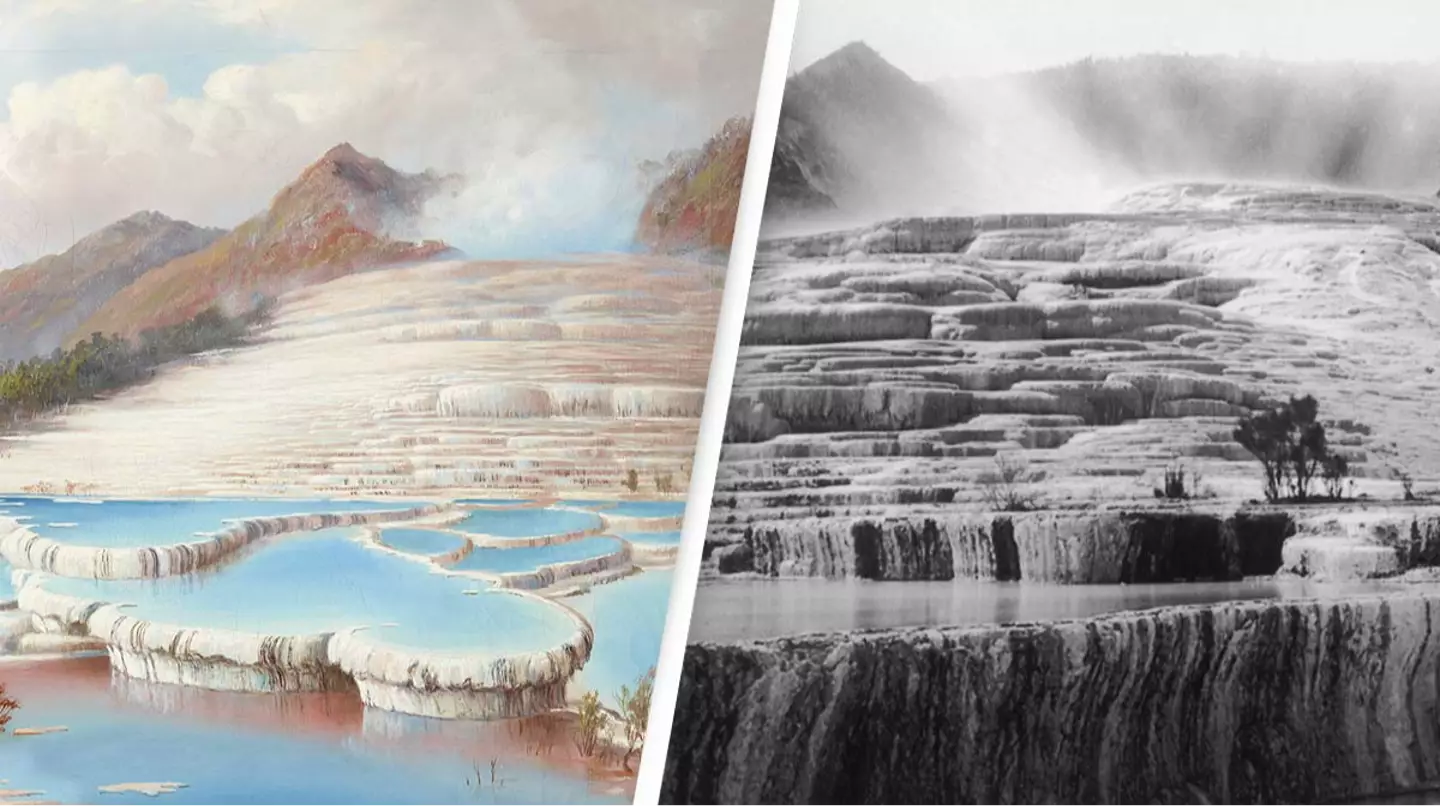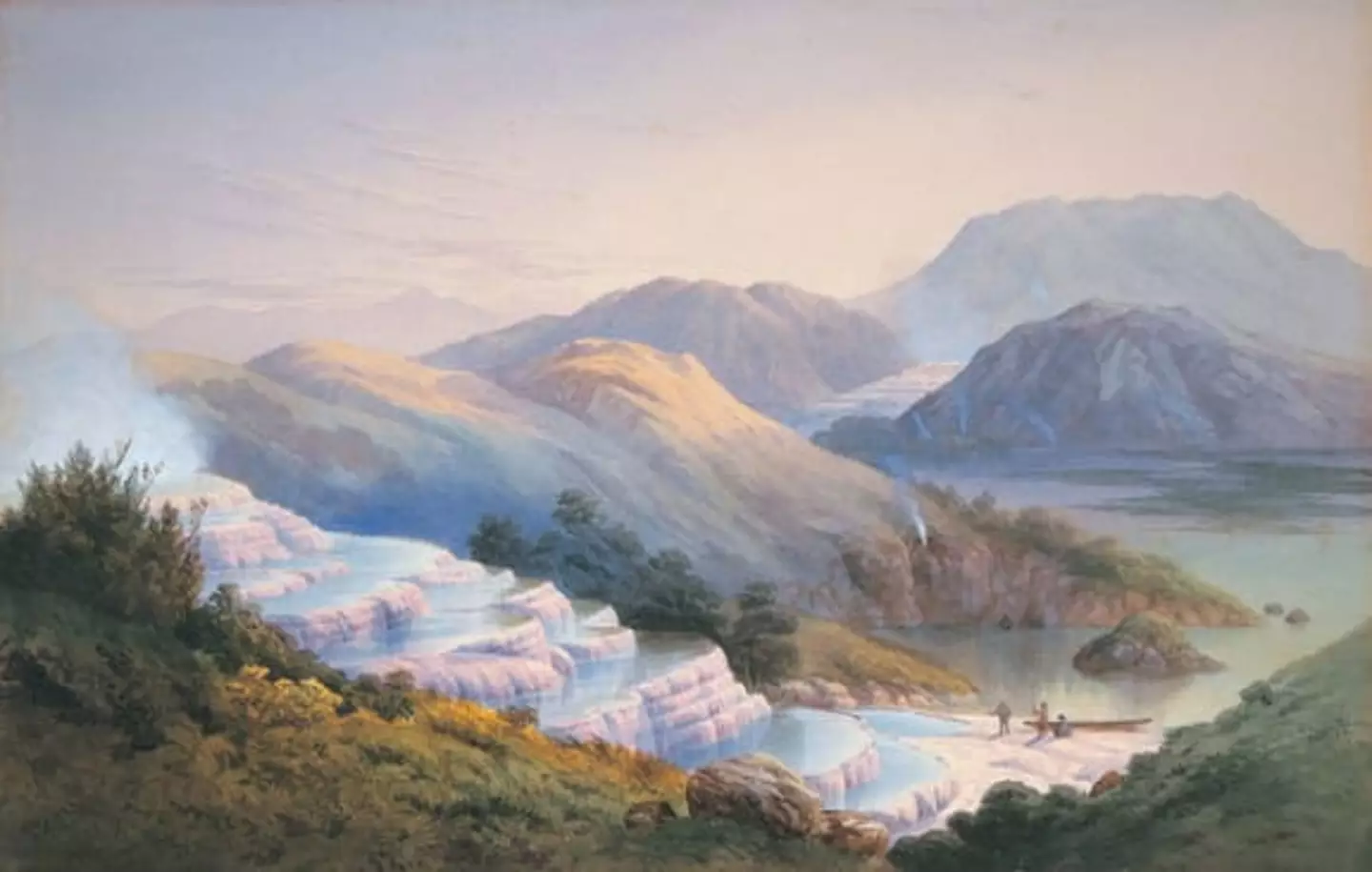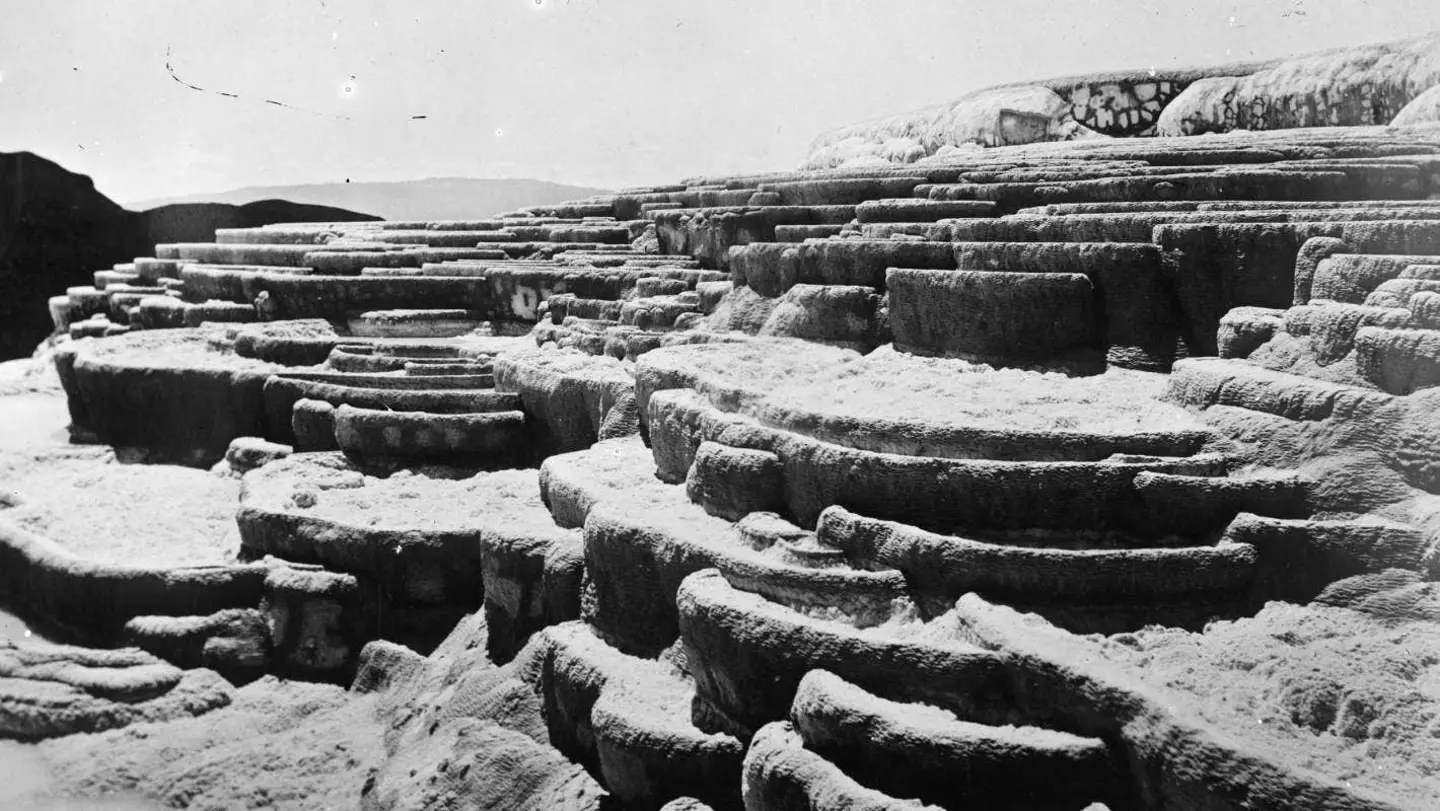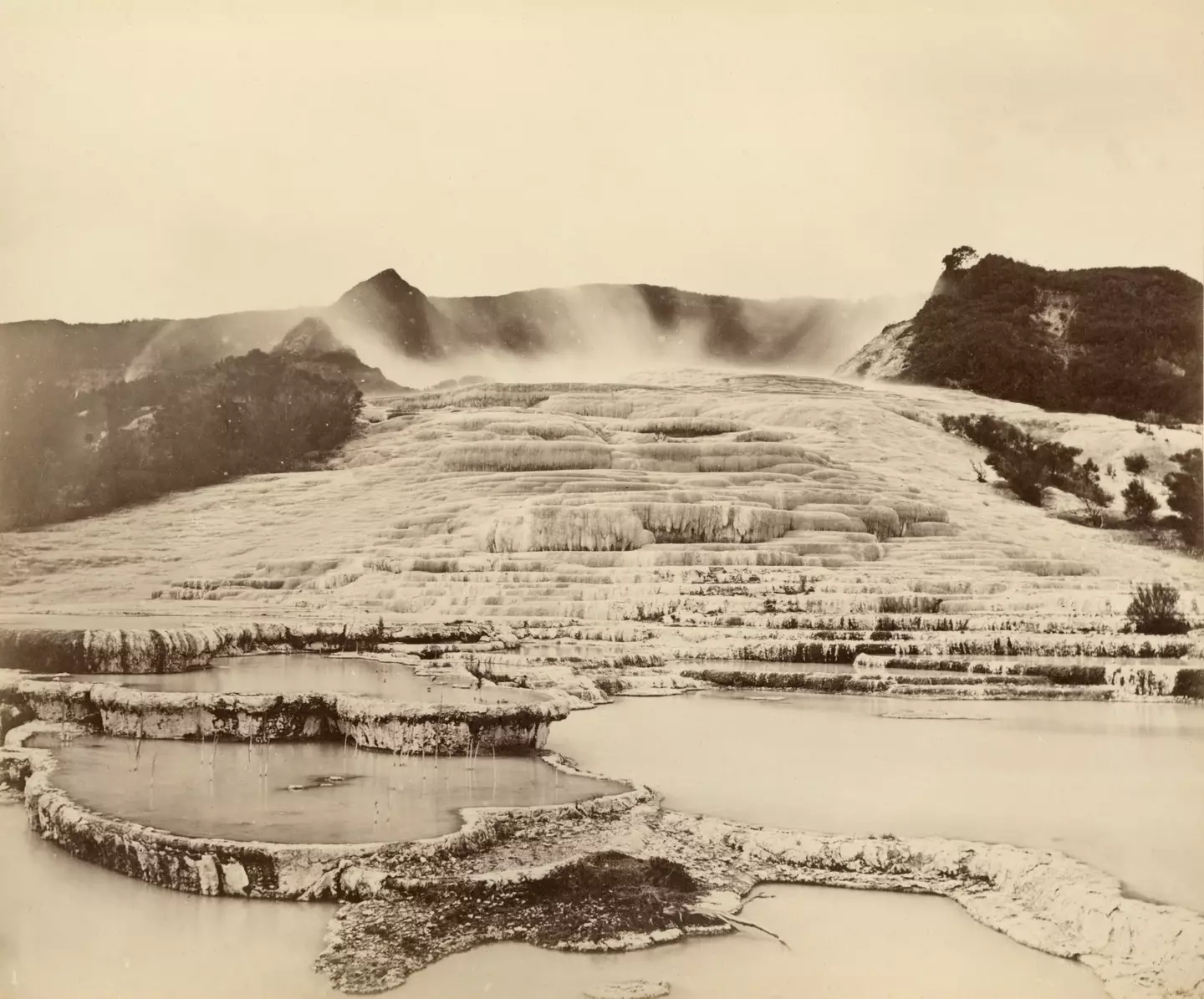
A place in New Zealand that was declared as the ‘eighth wonder of the world’ was lost to time for around 140 years following a volcanic eruption.
Tourists from all around the world used to visit the iconic pink and white terraces of Lake Rotomahana on New Zealand’s North Island during the mid-1800s.
The terraces were formed from silica and many believed that the waters had health-giving properties.
Advert
The area also had a number of hot springs and geysers caused by upwelling springs, and the whole area was an incredible piece of unique natural beauty.

However, that all came to an end back in 1886 when a nearby volcano called Mount Tarawera erupted, burying those pink and white cascading geothermal pools underneath metres of mud and ash.
With one volcanic incident, the whole world-renowned area was lost for more than a century, although many people have tried to locate it over the years.
Advert
Here’s a timeline of the various efforts that have been made to locate the lost wonder.
2011
A research team released a shocking revelation that the terraces might not have been totally lost at all.
Using two submarines, a team from the USA and New Zealand scoured the floor of Lake Rotomahana and identified what they thought was part of the iconic landmark.
Advert
Around 60 metres beneath the lake, the researchers said they were ’95 percent certain they have identified a crescent-shaped part of the bottom two layers of the Pink Terrace’.

2012
The previous scientific team from GNS returned in 2012, using seismic equipment to look through layers of mud and ash from the volcanic eruption, hoping to map the lake.
Advert
Whilst they didn’t find the white terraces, they did find some evidence that the pink terraces could be in a specific area that backed up the claims made the previous year.
2014
Two years later, photographs were released by the team.
The images appeared to show segments of both pink and white terraces in the locations that they’d believed them to be.
Advert
2017/18
Two researchers – Rex Bunn and Dr Sasha Nolden – used field diaries from a German-Austrian geologist and cartographer called Ferdinand von Hochstetter, made in the 1850s, to suggest a location for the terraces that – they believed – were covered beneath mud and ashes on the lake’s foreshore.
Their finding were published, but not everyone was so sure.

2018
The GNS scientists returned after Bunn and Nolden’s claims, performing more investigations and determining that their evidence did not support the idea that the terraces were buried on land outside the volcanic crater next to the lake.
They still believe the terraces are underneath the waters of Lake Rotomahana.
Maori tribal representatives also declared the 2017 findings as inconclusive, suggesting claims that the mystery was solved were ‘premature’.
2019
New images from Dr Cornel De Ronde of GNS with a remote operated vehicle purported to show sections of the pink terraces.
That sparked fresh interest and brought new eyes to the mystery.
As of the present day, it still remains unsolved.
The hope is that one day we’ll really know what happened to the pink and white terraces.
Topics: World News, Science, Weird
